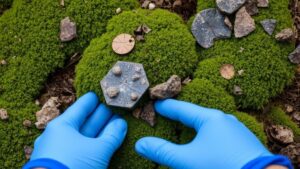Exploring Old Garbage Dumps for Glass Bottles and Vintage Packaging
Exploring Old Garbage Dumps for Glass Bottles and Vintage Packaging
The practice of exploring old garbage dumps and landfills, often referred to as dump digging or bottle digging, has garnered attention in recent years, primarily for its capacity to unveil historical artifacts and vintage items. Among the treasures often unearthed are glass bottles and vintage packaging, which serve as physical reminders of cultural, social, and economic narratives from past eras. This article delves into the significance of this practice, the methods used in excavations, and the implications for collectors, historians, and environmentalists.
The Historical Significance of Glass Bottles and Vintage Packaging
Glass bottles and packaging provide a window into the past, encapsulating the technological, cultural, and design trends of their time. For example, a study by the Society for Historical Archaeology reveals that glass bottles can be dated back to 2000 BCE, with significant advancements noted through various periods.
As the 19th century progressed, particularly with the advent of the Industrial Revolution, the production of glass bottles transitioned from handmade to mass-produced items. Different styles emerged, including the iconic Coca-Cola contour bottle introduced in 1915, which not only revolutionized beverage packaging but also became a cultural icon.
The value of vintage packaging lies not just in its aesthetic appeal but also in its resourcefulness and the reflection of societal attitudes. A glass bottle from a local pharmacy is not merely a container; it embodies the medical practices, marketing strategies, and consumer behavior of its time, offering essential insights into public health and consumerism.
Searching for old garbage dumps requires a mix of historical research, environmental awareness, and safety precautions. Here are some common steps taken during the exploration:
- Research: Identify potential sites by consulting historical maps, city records, and local libraries. Abandoned sites often provide clues about the existence of former dumps.
- Site Selection: Choose sites with a documented history of dumping, taking into consideration environmental regulations and land ownership issues.
- Safety Measures: Always wear safety gear such as gloves, masks, and sturdy clothing to protect against hazardous materials.
Once a site is identified, explorers often begin their search by carefully sifting through layers of soil. This process demands patience and an understanding of stratigraphy, as artifacts can become buried under layers of time.
Real-World Examples of Successful Excavations
Several notable examples highlight the fruitful discovery of glass bottles in old dumps:
- San Franciscos Landfill Excavations: Over the past few decades, archaeologists and hobbyists have excavated the old Landfill in San Francisco, revealing thousands of glass bottles and vintage items, showcasing the evolution of packaging from the 1880s through the 1940s.
- The New York City Waterfront: In the early 2000s, extensive excavations along the Manhattan waterfront uncovered unique glass artifacts, including soda bottles and medicinal vials, contributing significantly to our understanding of urban consumption patterns.
The Value of Vintage Bottles and Packaging
The collectibles market for vintage glass bottles and packaging has seen a resurgence, with certain pieces fetching impressive sums at auctions. For example, a 19th-century embossed soda bottle sold for over $10,000 at a heritage auction, emphasizing the appeal to collectors. The value of these items is based on various factors such as:
- Rarity: Items that are hard to find often hold significant value.
- Condition: The physical state of the bottle or package can greatly influence its market worth.
- Provenance: Items with a known history or those linked to famous brands often attract higher prices.
Environmental Considerations and Ethics
While the excitement of discovering old relics is palpable, it is imperative to approach the excavation of garbage dumps with environmental and ethical considerations. Legal regulations often govern digging in specific locations, particularly in urban areas. Respecting private property and protected sites is crucial.
Also, ancient landfills can harbor hazardous waste, making it essential to conduct thorough assessments and engage with environmental scientists when necessary. The act of recovering these items also plays a role in sustainable practices, as it prevents these materials from contributing further to pollution, supporting the principles of reuse and recycling.
Actionable Takeaways
Old garbage dumps can offer a plethora of information, heritage, and hidden treasures if approached responsibly. Here are a few key takeaways for anyone interested in exploring this unique realm:
- Conduct thorough research before excavating to understand the historical context and environmental considerations of the site.
- Join local clubs or online forums dedicated to bottle digging for shared knowledge and best practices.
- Respect the environment and legal boundaries while engaging in exploration to promote sustainable practices.
Overall, exploring old garbage dumps for glass bottles and vintage packaging presents a fascinating intersection of history, archaeology, and environmental consciousness. With appropriate care and respect, these explorations can reveal invaluable insights into our past and contribute to a greater appreciation for our material culture.


